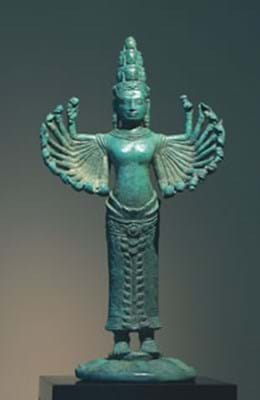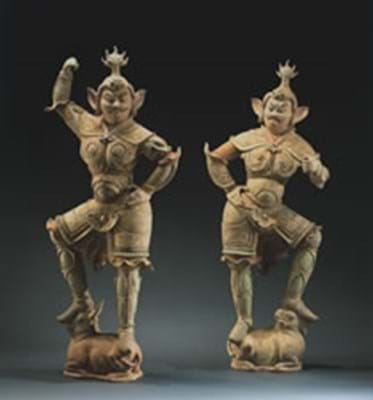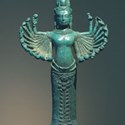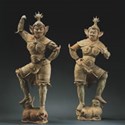The event is always enjoyable and critically successful, although often the commercial dimension, which is after all the most vital one, is a rather more difficult aspect to decipher.
This year, it seems Asia Week scored on all fronts, with good sales at the dealers' gallery shows, keen demand at the Asian auctions and, for most of the 55 exhibitors, the most successful International Asian Art Fair for some time.
Founded by London duo Brian and Anna Haughton a decade ago, the international fair, which was held at the Seventh Regiment Armory on Park Avenue from April 1 to 6, with a charity preview on the evening of March 31, is the single event which spawned Asia Week and remains very much its hub.
It is gratifying that the tenth anniversary staging should be a good one, and this was apparent from the preview party to benefit the Asia Society. A rash of red dots around the fair bore out good first-night business by most dealers.
The organisers have seen some big sales at their Manhattan fairs, but, after the first night, Anna Haughton was moved to comment: "In all the years we have been coming to the Armory I cannot remember such frantic buying."
Buying was not necessarily frantic for the rest of the fair, but there were plenty of sales.
As usual, museum curators were out in force and they bought well. German dealer Erik Thomsen sold an important pair of c.1700 folding Japanese screens by the Sotatsu School to a collector who is donating them to New York's Metropolitan Museum in honour of Barbara Ford, the museum's curator of Japanese art.
New York's Kang Collection sold eight of their top pieces to museums.
Throughout Asia Week, mainland Chinese buyers were much in evidence in New York and they were active at the fair. Chinese work at all levels sold, but, reflecting current trends in the Asian market, there was also much interest in Korean, Khmer and Tibetan work.
As in the past couple of years, there was strong interest in Japanese work.
London Japanese specialist Kevin Page said: "This year there appears to be a markedly healthier interest in Japanese items resulting in sales of major items to Japanese museums and collectors, and to American private and trade buyers."
Jean Schaeffer of Flying Cranes, leading New York specialists in Japanese works, reflected: "Our experience here at this fair corroborates what has been transpiring at the gallery. Asian art, in our case Japanese Meiji art, continues to burgeon and take its rightful place in the art world."
While there were plenty of high-ticket sales at the likes of Carlo Christi, The Chinese Porcelain Company, Nancy Wiener and John Eskenazi (who sold his prize piece to an American collector for a seven-figure sum) there were perhaps fewer showstoppers around than in the past, with a bigger representation of the middle ranges.
But there were sales in all areas and it was noted this year that contemporary, especially Japanese contemporary, work is really taking off.
After the fair, a typically happy exhibitor was Nader Rasti of London firm Knapton Rasti.
He described it as a very, very good show, selling more than 30 pieces, including two to museums and most others to collectors and decorators.
He concluded: "The Haugh-ton fair is the best Asian show in the world and if you don't sell here, you won't sell anywhere."
Celebrations all round thanks to Asia
NEW York’s Asian celebrations in late March and the first week of April always galvanise the international trade, attracting to the city collectors, curators and dealers from all over the world.








